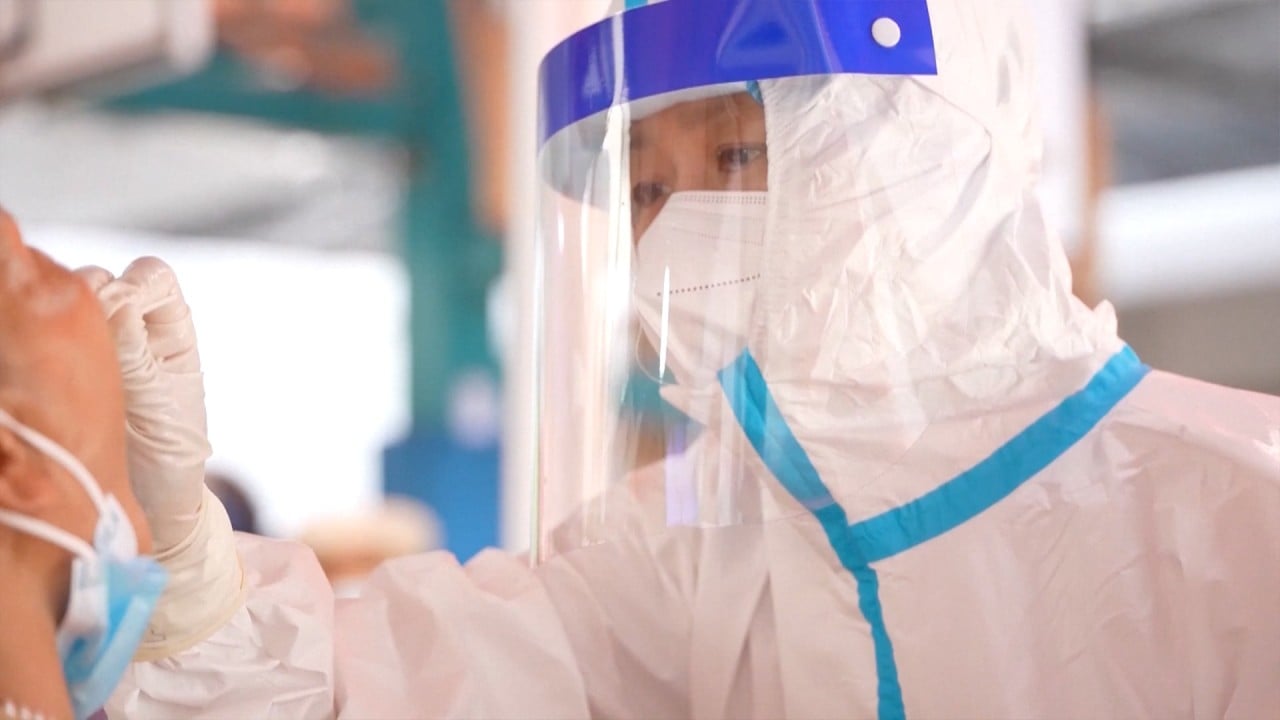
China’s economic slowdown threat increases calls to cut interest rates as coronavirus outbreaks blight recovery
- With China’s post-coronavirus economic recovery under threat, economists affiliated with the government see scope for lower interest rates
- Their views contrast with global investment banks, who mostly see the People’s Bank of China (PBOC) keeping policy interest rates steady this year
China’s central bank is facing mounting calls to cut interest rates as fresh coronavirus outbreaks threaten to upend the recovery in the world’s second-largest economy.
Their views contrast with global investment banks, who mostly see the People’s Bank of China (PBOC) keeping policy interest rates steady this year.
Xu Hongcai, deputy director of the economic policy committee at the state-run think tank China Association of Policy Science, argues Beijing’s tightening regulations mean looser monetary policy “won’t create a huge risk or lead to a significant rise in property prices”.
The PBOC has denied the RRR cut meant a shift into broader easing, but markets have started pricing in lower rates, fuelling a rally in government bond prices.
The next window on the central bank’s thinking will be provided by 700 billion yuan (US$108 billion) of one-year loans to banks maturing next week.
The impact of the RRR cut is still being felt so there’s no need for a full rollover
Market strategists are taking the PBOC at its word and all but one of 11 surveyed by Bloomberg forecast no change in interest rates offered on the loans.
Most just expect the central bank will reduce the amount of that lending to offset some of the liquidity provided by the reserve requirement cut.
“The impact of the RRR cut is still being felt so there’s no need for a full rollover,” said Tommy Xie, head of Greater China research at Oversea-Chinese Banking Corporation.
When deciding key policy rates at which it lends to banks, the PBOC juggles three competing mandates: price and currency stability, supporting economic growth, and financial stability.
Since 2017, the bank has become more hawkish as it increased emphasis on the stability goal, trying to limit the overall amount of debt in the economy, especially in property, shadow banking and off-balance sheet local government debt.
The PBOC abandoned that campaign briefly to offset the coronavirus pandemic, before resuming it late last year as it began winding back its stimulus and curbing credit growth in the economy.

01:56
Covid-19 Delta variant cluster spreads in China’s eastern Jiangsu province
Some investment banks including Goldman Sachs have lowered their growth estimates for the third quarter and full year.
“We should lower interest rates as soon as possible, and the magnitude should be relatively big,” CASS’s Zhang said in a speech in late July.
Underlying the argument for lower interest rates is the fact that many government-linked economists see less of a conflict between supporting economic growth and financial stability than before.
Debt control efforts have been a success, they say, and the PBOC can lower key policy rates to encourage companies and local governments to borrow and invest, while still preventing credit flowing to risky sectors, like real estate.
Latest data show how the deleveraging campaign has transformed the structure of lending: growth of outstanding property-related loans was the slowest in eight years in the second quarter, while shadow banking assets have shrunk markedly as a proportion of new credit.
We have to cut interest rates and the reserve requirement ratio, because only then investment can be boosted and the economic momentum will be lifted
Credit data for July released late on Wednesday also showed a marked slowdown.
Another argument for lower rates is to bolster corporate investment growth, which had been sluggish even before the delta outbreak.
Rising commodity prices have squeezed profitability for many companies, while the financing environment for private firms worsened last month, according to a Cheung Kong Graduate School of Business survey.
“We have to cut interest rates and the reserve requirement ratio, because only then investment can be boosted and the economic momentum will be lifted,” said Cao Heping, an economics professor at Peking University.

